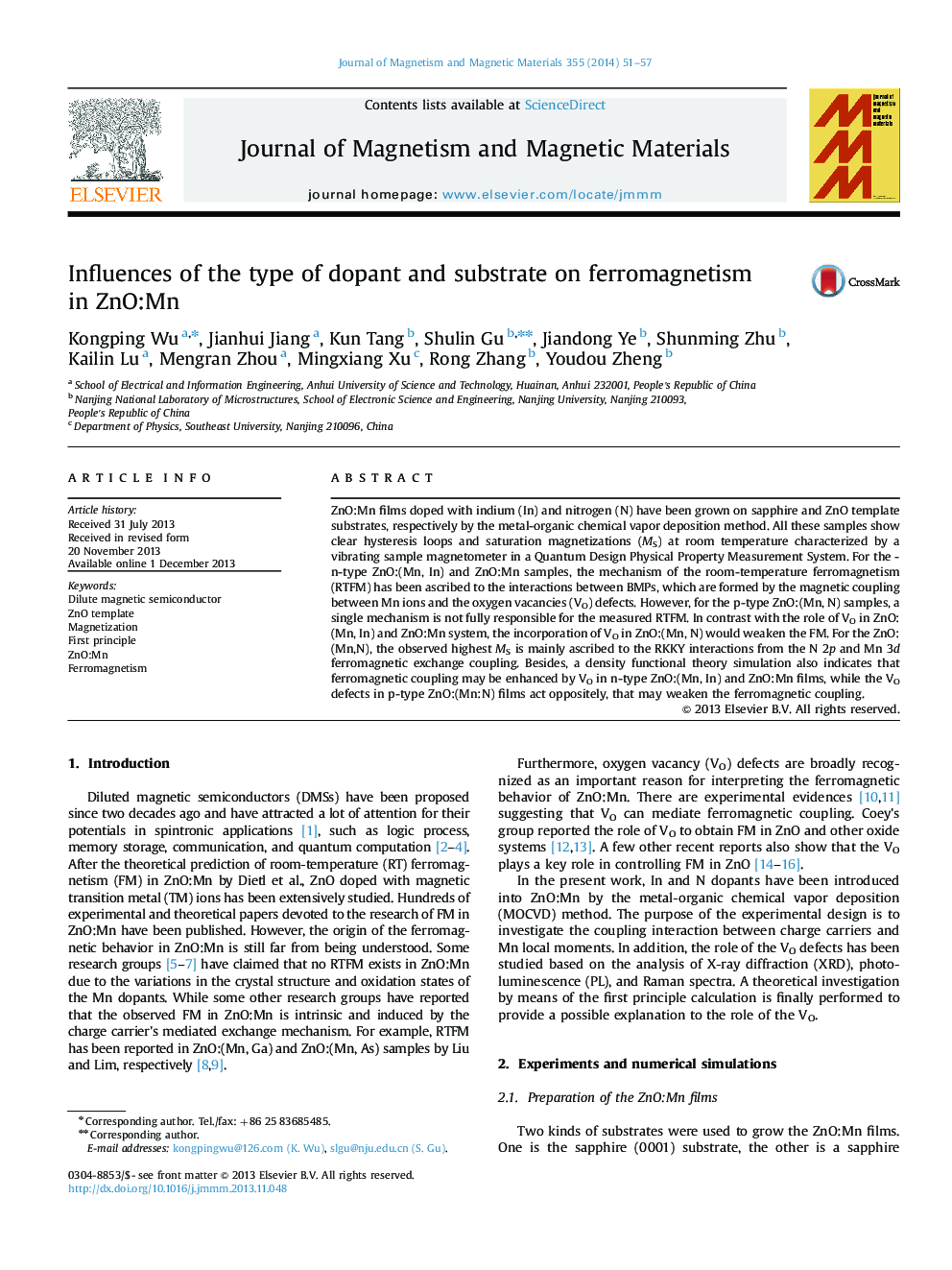| Article ID | Journal | Published Year | Pages | File Type |
|---|---|---|---|---|
| 1799792 | Journal of Magnetism and Magnetic Materials | 2014 | 7 Pages |
•ZnO:Mn films doped with indium and nitrogen have been grown on sapphire and ZnO template substrates.•Room-temperature ferromagnetism has been observed in ZnO:Mn films doped with indium and nitrogen films.•Oxygen vacancies (VO) in n-type Mn doped and (Mn, In) codoped ZnO would enhance the room-temperature ferromagnetism.•The VO in p-type (Mn, N) codoped ZnO films would weaken the ferromagnetic coupling.
ZnO:Mn films doped with indium (In) and nitrogen (N) have been grown on sapphire and ZnO template substrates, respectively by the metal-organic chemical vapor deposition method. All these samples show clear hysteresis loops and saturation magnetizations (MS) at room temperature characterized by a vibrating sample magnetometer in a Quantum Design Physical Property Measurement System. For the n-type ZnO:(Mn, In) and ZnO:Mn samples, the mechanism of the room-temperature ferromagnetism (RTFM) has been ascribed to the interactions between BMPs, which are formed by the magnetic coupling between Mn ions and the oxygen vacancies (VO) defects. However, for the p-type ZnO:(Mn, N) samples, a single mechanism is not fully responsible for the measured RTFM. In contrast with the role of VO in ZnO:(Mn, In) and ZnO:Mn system, the incorporation of VO in ZnO:(Mn, N) would weaken the FM. For the ZnO:(Mn,N), the observed highest MS is mainly ascribed to the RKKY interactions from the N 2p and Mn 3d ferromagnetic exchange coupling. Besides, a density functional theory simulation also indicates that ferromagnetic coupling may be enhanced by VO in n-type ZnO:(Mn, In) and ZnO:Mn films, while the VO defects in p-type ZnO:(Mn:N) films act oppositely, that may weaken the ferromagnetic coupling.
